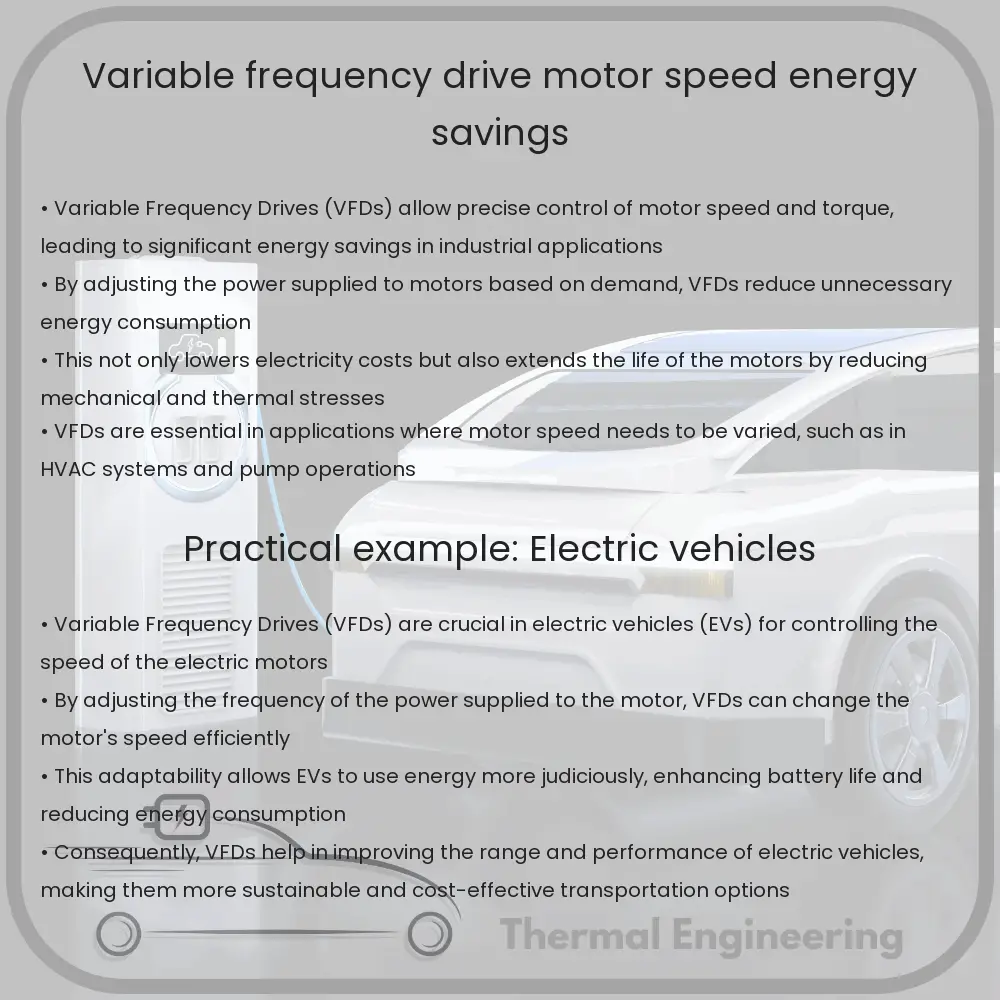Learn how Variable Frequency Drives (VFDs) optimize motor control by adjusting frequency and voltage, leading to significant energy savings and enhanced operational efficiency in industrial settings.

Understanding Variable Frequency Drives
A Variable Frequency Drive (VFD) is a type of motor controller that drives an electric motor by varying the frequency and voltage supplied to the electric motor. This ability to control the power input to the motor allows for significant energy savings as well as better control of motor operation. VFDs are widely used in industrial applications to enhance system efficiency and extend the life of mechanical components.
How Variable Frequency Drives Work
VFDs mainly include three components: the rectifier, which converts the incoming alternating current (AC) to direct current (DC); the DC bus, which stores the DC power; and the inverter, which converts the DC back into AC with the desired frequency. By adjusting the frequency of the AC power output, the drive can control the motor speed, since the speed of AC motors is primarily determined by the frequency of the AC supply.
Motor Speed Control
The primary function of a VFD is to control the speed of an electric motor. The speed of an AC motor is given by the equation:
Speed (RPM) = (120 * Frequency) / Number of Poles
Where “Frequency” is the frequency of the AC power supplied (in Hertz), and “Number of Poles” is the number of poles the motor is constructed with. By changing the frequency, the VFD can increase or decrease the motor speed, which is essential for applications requiring different speeds for various processes.
Energy Savings
One of the significant advantages of using a VFD is the potential for energy savings. In many applications, machinery does not need to operate at full speed at all times. By using a VFD to slow down the motor during lower demand periods, energy consumption is reduced. The power required to run a motor decreases as the cube of the motor’s speed; this relationship is modeled by the equation:
Power = Torque * (Speed3)
Therefore, small reductions in speed can lead to significant reductions in energy usage, highlighting the efficiency benefit of using VFDs.
Other Benefits of Variable Frequency Drives
- Extended Equipment Life: By controlling the acceleration and deceleration of electric motors, VFDs reduce the mechanical stress on motors and connected equipment, resulting in extended operational life.
- Reduced Motor Maintenance: Slower operating speeds can lead to longer intervals between maintenance, reduced wear and tear, and lower repair costs.
- Improved Process Control: VFDs offer precise speed control which is crucial for many manufacturing processes where precision and repeatability are key.
Conclusion
The utilization of Variable Frequency Drives in modern engineering is a testament to how advances in technology can be employed to create more efficient and effective operating environments. By controlling motor speed and reducing energy consumption, VFDs not only offer cost savings but also contribute to the sustainability and operational efficiency of industrial applications.